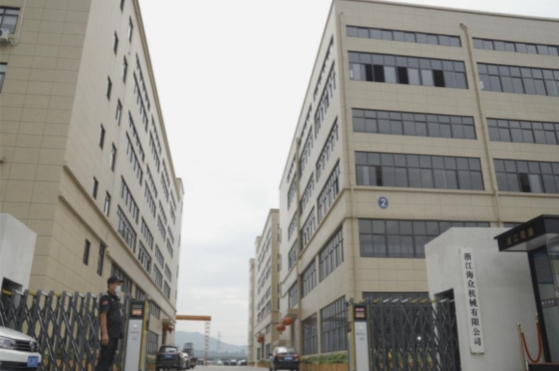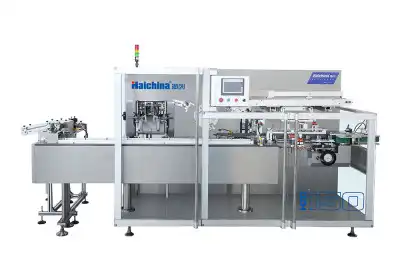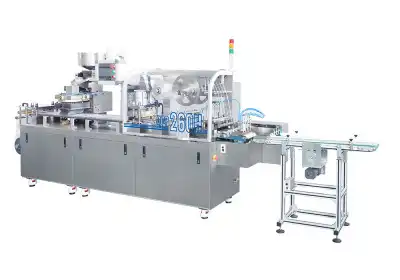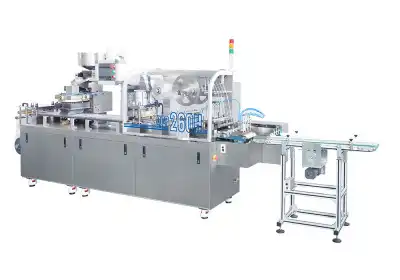The Fundamentals of Blister Packaging
Structure and Components of Blister Packs
Blister packaging is characterized by its distinctive structure, comprising a thermoformed plastic cavity and a backing material. The plastic cavity, often made from PVC, PET, or other polymers, is designed to conform to the shape of the product it contains. This custom-fit approach provides excellent protection against physical damage and environmental factors. The backing, typically aluminum foil or paper, seals the product within the cavity and often serves as a surface for printing product information and branding.
Manufacturing Process of Blister Packs
The production of blister packs involves a sophisticated process known as thermoforming. In this method, plastic sheets are heated to a pliable state and then molded into the desired shape using vacuum or pressure forming techniques. Once cooled, the formed cavities are filled with products and sealed with the backing material. This process allows for high-volume production and customization to accommodate various product shapes and sizes.
Applications and Benefits of Blister Packaging
Blister packaging finds extensive use in pharmaceuticals, consumer electronics, and retail goods. Its transparency allows for visual inspection of the product, enhancing consumer confidence. The rigid structure provides excellent protection against crushing and tampering, making it ideal for fragile items or those requiring child-resistant features. Additionally, blister packs offer portion control benefits, particularly valuable in the pharmaceutical industry for unit-dose medications.
Strip Packaging Explored
Composition and Design of Strip Packs
Strip packaging, also known as pouch packaging, consists of two layers of flexible material sealed together to encase products. These materials are typically plastic films, aluminum foil, or a combination of both. The design is inherently flat and elongated, with individual compartments created by heat-sealing the layers at regular intervals. This results in a string of connected pouches, each containing a single dose or unit of the product.
Production Techniques for Strip Packaging
The manufacturing of strip packages in blister packaging employs a continuous process where the packaging material is fed from rolls, filled with product, sealed, and cut into individual strips. This method allows for high-speed production and is particularly efficient for small, uniform items like tablets or capsules. Advanced machinery can incorporate features such as perforation between doses for easy separation and printing of information directly on the packaging material.
Advantages and Common Uses of Strip Packaging
Strip packaging excels in applications where compact, lightweight, and easily dispensable packaging is desired. It's predominantly used in the pharmaceutical industry for oral medications, offering benefits such as moisture protection and convenient dosage management. The flat profile of strip packs makes them ideal for products that require minimal storage space or need to be carried in wallets or pockets. Additionally, the continuous nature of strip packaging allows for clear organization of sequential doses, enhancing patient compliance in medical applications.
Comparative Analysis: Blister vs. Strip Packaging
Protection and Preservation Capabilities
When it comes to product protection, blister packaging generally offers superior resistance to physical damage due to its rigid structure. The thermoformed cavities act as a buffer, shielding contents from impact and compression. Strip packaging, while less robust against crushing forces, excels in providing a hermetic seal that effectively guards against moisture and oxygen ingress. This makes strip packs particularly suitable for moisture-sensitive pharmaceuticals. Both packaging types can be engineered with barrier properties to extend product shelf life, but the specific requirements of the product will dictate which method is more appropriate.
Cost and Production Efficiency
The economics of packaging play a crucial role in manufacturing decisions. Strip packaging typically offers advantages in terms of production speed and material costs. The continuous production process and use of flexible materials contribute to its cost-effectiveness, especially for high-volume applications. Blister packaging, while potentially more expensive due to the thermoforming process and rigid materials, can be more economical for products that require robust protection or when tamper-evidence is a priority. The choice between the two often involves balancing production efficiency with the specific protection needs of the product.
Consumer Convenience and Market Appeal
From a user perspective, both packaging types offer distinct benefits. Blister packs provide clear visibility of the product, which can be a significant factor in consumer purchasing decisions. They also offer ease of access, with individual units easily pushed through the backing material. Strip packaging shines in portability and discretion, making it preferred for products that consumers may need to carry with them. The choice between blister and strip packaging can significantly impact brand perception and product differentiation in the marketplace, influencing consumer preferences and loyalty.
Conclusion
The choice between blister packaging and strip packaging is not merely a matter of preference but a strategic decision that can significantly impact product integrity, consumer satisfaction, and market success. Blister packaging offers robust protection and visual appeal, making it ideal for products that benefit from visibility and tamper-evident features. Strip packaging, with its compact design and efficient production, excels in applications requiring portability and moisture protection. As packaging technology continues to evolve, manufacturers must carefully consider their product's specific needs, target market, and production capabilities when choosing between these two packaging solutions. Ultimately, the right choice will depend on a nuanced understanding of both packaging methods and their alignment with the product's requirements and market positioning.
FAQs
What types of products are best suited for blister packaging?
Blister packaging is ideal for pharmaceuticals, small electronics, and retail items that benefit from visual display and protection against physical damage.
Can strip packaging be used for non-pharmaceutical products?
Yes, strip packaging is versatile and can be used for various small, uniform items such as candies, seeds, or small hardware components.
Which packaging method is more environmentally friendly?
The environmental impact depends on the specific materials used. Both can be designed with recyclable or biodegradable materials to minimize environmental impact.
How does the cost of blister packaging compare to strip packaging?
Generally, strip packaging is more cost-effective for high-volume production, while blister packaging may be more economical for products requiring robust protection.
Can both packaging types offer child-resistant features?
Yes, both blister and strip packaging can be designed with child-resistant features to comply with safety regulations for certain products.
Expert Packaging Solutions | Haichina
At Zhejiang Haizhong Machinery Co., Ltd., we are a trusted blister packaging machine manufacturer, specializing in providing cutting-edge packaging solutions for diverse industries. Our state-of-the-art blister packaging and strip packaging machines are designed to meet the highest standards of efficiency and quality. With over 20 years of experience, our packaging line factory delivers innovative, CE and cGMP-compliant equipment to global markets. For customized packaging solutions tailored to your specific needs, contact our expert team at [email protected] and elevate your product packaging to new heights of excellence.
References
Johnson, M. (2022). Pharmaceutical Packaging Handbook. New York: Springer Publishing.
Smith, R. (2021). Advances in Blister Packaging Technology. Journal of Packaging Science, 45(3), 112-128.
Zhang, L., & Williams, K. (2023). Comparative Analysis of Strip and Blister Packaging in the Pharmaceutical Industry. International Journal of Drug Delivery, 12(2), 78-95.
Brown, A. (2020). Sustainable Packaging Solutions: A Comprehensive Guide. London: Green Press.
Lee, S., & Patel, N. (2022). Consumer Preferences in Pharmaceutical Packaging: A Global Survey. Market Research Quarterly, 33(4), 201-215.
Thompson, D. (2023). Innovation in Packaging Machinery: Trends and Forecasts. Industrial Engineering Review, 18(1), 55-70.





